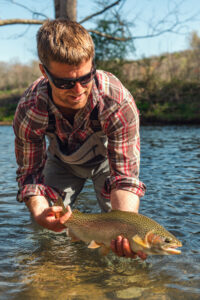Experience the Beauty of Fall Fly Fishing in North Carolina
As the vibrant colors of autumn sweep through the Appalachian Mountains, there’s no better time to embark on a fly fishing adventure. Fall fly fishing in North Carolina offers anglers a unique opportunity to enjoy pristine waters surrounded by stunning foliage, cooler temperatures, and the excitement of trout gearing up for the winter months. Whether you’re new to the sport or an experienced angler, Wild Water Fly Fishing will guide you through an unforgettable fall fishing experience in Asheville, Highlands, and Jackson County.
Why Fall is the Perfect Season for Fly Fishing
While every season brings something special to fly fishing, fall is arguably the most rewarding time of the year. The cooler temperatures of autumn invigorate trout, making them more active and hungry. This season also signals a time of heightened feeding as trout prepare for winter, meaning they are more aggressive and eager to bite.
 Fall fly fishing also provides an unparalleled backdrop. In Asheville, NC, and surrounding areas, the changing leaves paint the landscape in rich hues of orange, red, and gold. The quiet, serene atmosphere of the rivers and streams adds to the overall charm of the season, making your fly fishing experience as peaceful as it is thrilling.
Fall fly fishing also provides an unparalleled backdrop. In Asheville, NC, and surrounding areas, the changing leaves paint the landscape in rich hues of orange, red, and gold. The quiet, serene atmosphere of the rivers and streams adds to the overall charm of the season, making your fly fishing experience as peaceful as it is thrilling.
Target Species in the Fall: What You’ll Catch
Fall fly fishing with Wild Water Fly Fishing gives you the chance to target North Carolina’s most sought-after trout species. Whether you’re fishing in the East Fork French Broad River or exploring the Nantahala River, you can expect to encounter:
- Rainbow Trout: Known for their stunning colors and acrobatic fights, rainbow trout are plentiful in fall, particularly in the cooler tailwaters of the lower Nantahala and other mountain streams.
- Brown Trout: A prized catch for experienced anglers, brown trout become more active in fall as they prepare for their spawning season. These elusive fish are often found in deep pools and runs, providing an exhilarating challenge.
- Brook Trout: Native to North Carolina’s mountain streams, brook trout are known for their vibrant fall colors, which match the beauty of the surrounding landscape. Fall is an excellent time to target these feisty fish in smaller, higher-elevation streams.
Best Fall Fly Fishing Spots in North Carolina
Wild Water Fly Fishing specializes in guiding anglers through some of the most productive and scenic waters in the region. Here are a few of the best spots to visit during your fall fly fishing adventure:
- Nantahala River (Topton, NC): The upper Nantahala, with its stunning scenery and active trout, is a fall favorite. The colder water of the lower Nantahala makes it a perfect place to target wild rainbows, especially for more experienced anglers looking to sharpen their skills.
- Tuckaseegee River (Cullowhee, NC): This high-density trout stream offers excellent opportunities for both wade fishing and casting from a raft. Fall brings out the best in the Tuckaseegee, with a wide variety of fish to target as the temperatures cool.
- East Fork French Broad River (Rosman, NC): Located just 50 minutes from Asheville, this freestone delayed-harvest stream is ideal for those looking to experience fall fly fishing close to town. The crystal-clear waters and vibrant foliage make it an unbeatable destination in autumn.
Fly Fishing Techniques for Fall Success
Fall fly fishing requires a different approach than other seasons. The cooler water temperatures affect trout behavior, making it essential to adjust your tactics for optimal success.
- Nymphing: Euro nymphing and tight line nymphing are especially effective in fall. Wild Water Fly Fishing’s guide, Ryan Peck, specializes in these techniques, which are perfect for targeting trout in deeper runs and pockets. The increased feeding activity means that trout are more likely to respond to subsurface flies.
- Streamer Fishing: In fall, trout are more aggressive, making streamer fishing an excellent choice. Large streamers can mimic the baitfish that trout are actively pursuing as they fatten up for winter. Whether you’re casting for rainbow or brown trout, this technique can lead to impressive catches.
- Dry Fly Fishing: While not as common in fall, dry fly fishing can still be productive during warmer autumn days. Keeping a few dry flies handy for late morning or early afternoon can help you land trout rising to the surface, especially on sunny days.
What to Bring on Your Fall Fly Fishing Trip
A successful fall fly fishing trip requires careful planning, especially when it comes to gear and clothing. Here’s what you’ll need to stay comfortable and prepared for the day:
- Layered Clothing: Fall temperatures can vary widely throughout the day, so dressing in layers is essential. Pack moisture-wicking clothing to keep dry, and don’t forget a warm jacket for the cooler mornings and evenings.
- Polarized Sunglasses: With the sun sitting lower in the sky, the glare on the water can be strong. Polarized sunglasses not only protect your eyes but also improve your ability to spot fish in the water.
- Waders and Boots: The waters of North Carolina’s trout streams remain chilly in fall, so waders and sturdy boots are a must. Wild Water Fly Fishing offers waders for free with each trip, making sure you’re fully equipped for a day on the water.
Book Your Fall Fly Fishing Adventure with Wild Water Fly Fishing
There’s no better time to experience the thrill of fly fishing than in the fall. With the expert guidance of Wild Water Fly Fishing, you’ll explore North Carolina’s most beautiful waters while enjoying the excitement of fall trout fishing. Whether you’re hoping to catch your first trout or aiming to improve your skills, Wild Water Fly Fishing is here to ensure a memorable adventure.
